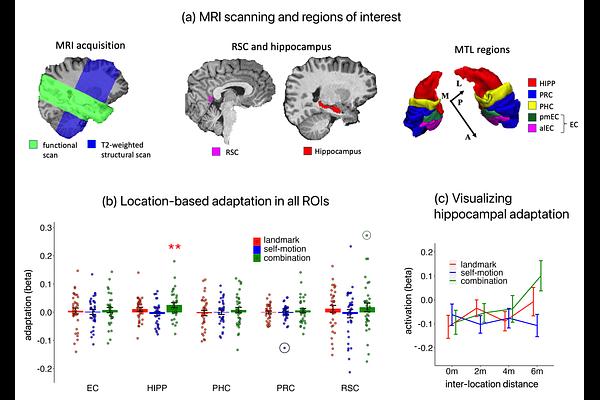A Unique Role for the Hippocampus in Cue Integration During Human Spatial Navigation

A Unique Role for the Hippocampus in Cue Integration During Human Spatial Navigation
Wei, Z.; Wolbers, T.; Chen, X.
AbstractA central question in cognitive neuroscience is how the brain integrates distinct sensory and perceptual inputs to improve cognitive performance. This study investigated this question in the context of human spatial navigation by combining high-field 3T fMRI and desktop virtual reality. Participants encoded and retrieved spatial locations using either landmarks alone (landmark condition), visual self-motion cues alone (i.e., optic flow; self-motion condition), or both cues together (combination condition). Participants behaviorally benefited from cue integration. fMRI analyses revealed a cue integration effect in the hippocampus, which displayed positional coding only in the combination condition, and only in participants who showed behavioral benefits from cue integration. Furthermore, hippocampal positional coding was more strongly associated with actual than self-reported locations, indicating it integrates sensory-perceptual inputs from spatial cues. Our findings suggest that fundamental function of the hippocampus is to integrate diverse sensory-perceptual inputs to support memory-guided navigation, rather than representing space per se, thereby challenging the dominant cognitive map theory in spatial navigation.